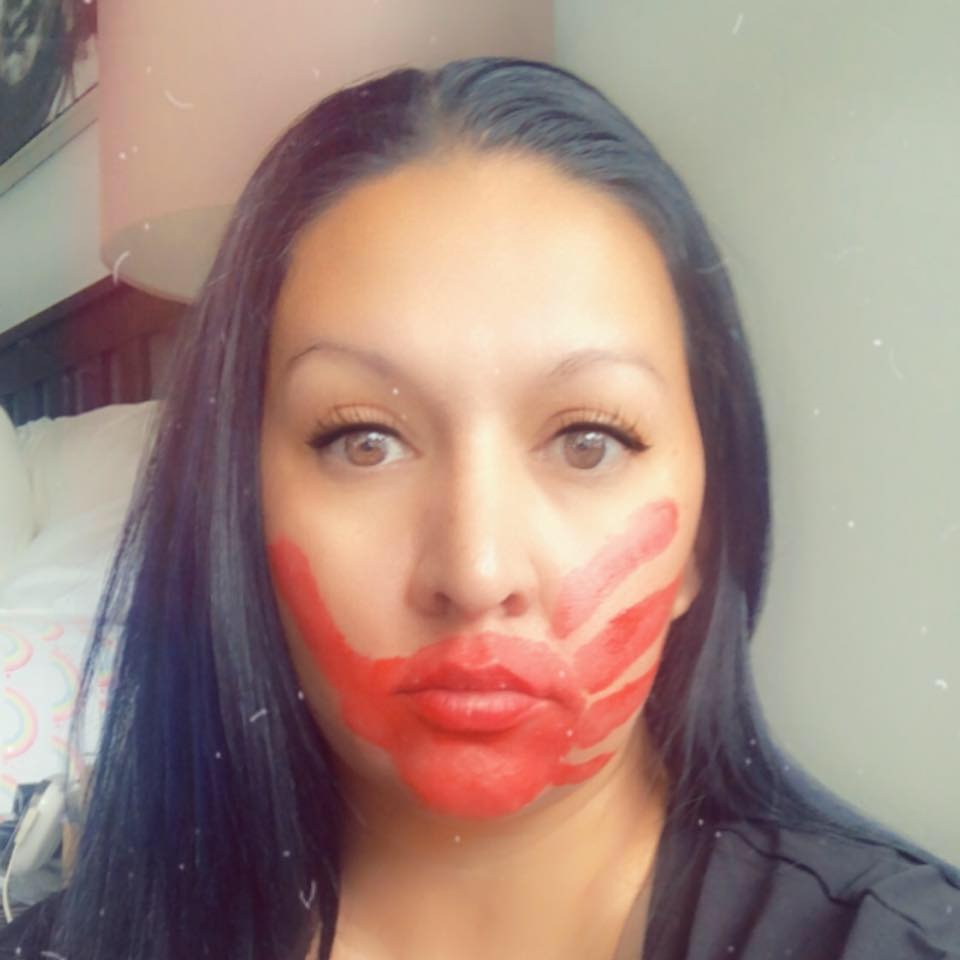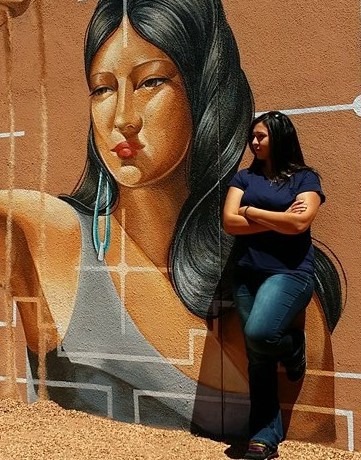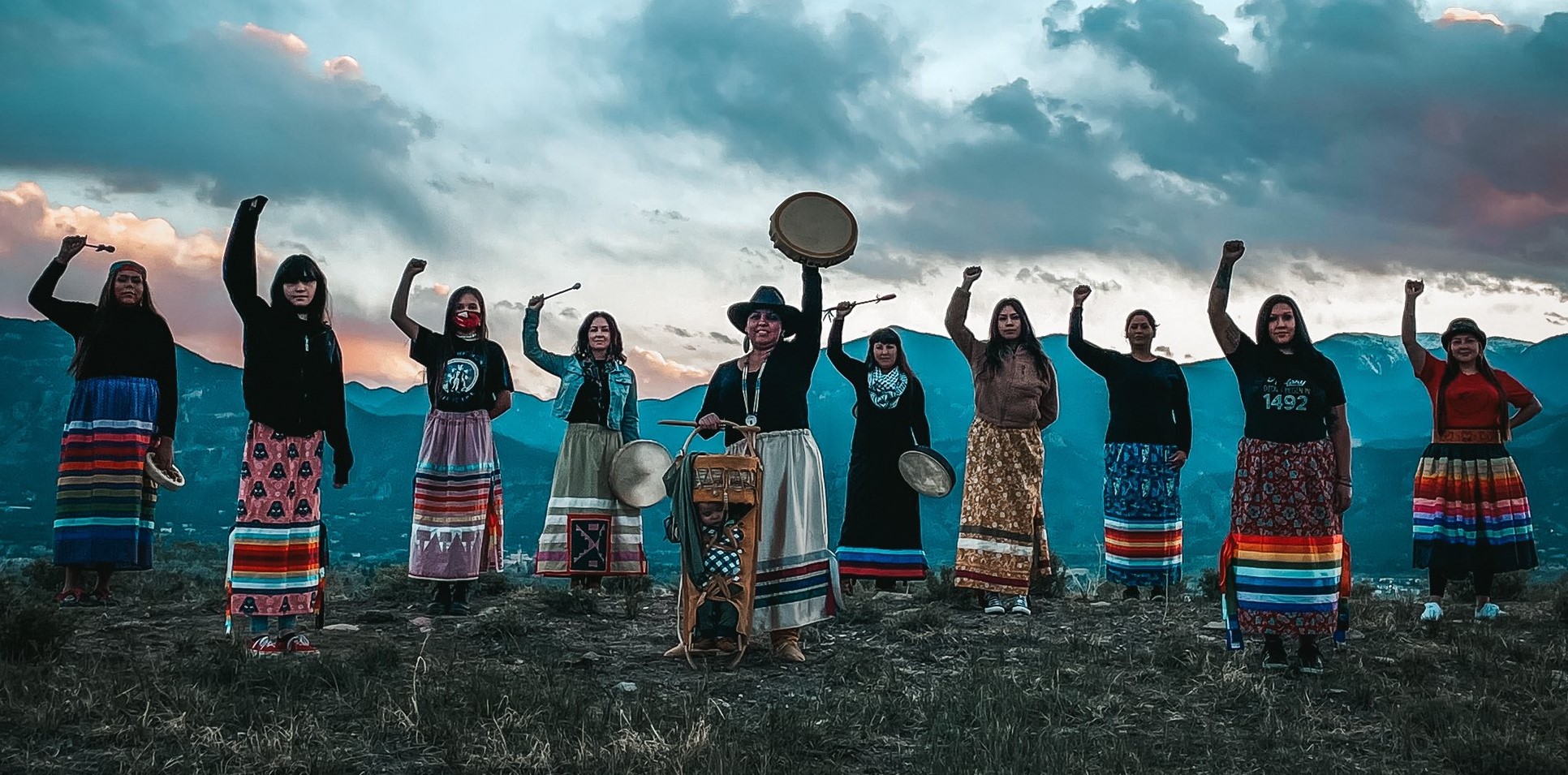Righting Wrongs
1In many ways, the 1st of April 2021 should have been the culmination of many years of fighting for Raven Payment. Senate Bill 21-116 (Prohibit American Indian Mascots) had just cleared its first committee hearing at the Colorado General Assembly.
Three weeks later she drew a sharp intake of breath, walked into the Senate, and presented in support of the bill, which ultimately passed and moved on to the House of Representatives. But this part of the fight was far from over – in fact, rather than feeling justifiably jubilant, there was one overwhelming feeling for Payment. “Hell. We’ve got a lot of work to do”.
Then, on the 3rd of June 2021, history was finally made. After the bill’s third reading at the House of Representatives, SB21-116 passed into law (although at the time of writing, it is awaiting official sign off). Raven Payment’s fight was over. For the time being anyway.
The legislation was brought to the table as it is considered that the use of Native American mascots promotes bullying and harassment of Native students. The bill also claims that it promotes the reinforcement of cultural inaccuracies and teaches students that it is acceptable to participate in culturally abusive behaviours.
On this side of the world, most sports fans will be familiar with the Washington Redskins and the Cleveland Indians. Both organisations, amidst huge public pressure, retired their mascots in 2020. Washington rebranded as the Washington Football Team, whilst Cleveland is removing “Indians” from their name at the end of the current season.
At the same time, there are 25 state schools in Colorado that currently use naming and imagery regarded offensive to the Native American people. Many have also used mascots that utilise caricatures in such a way that they are largely lampooning the culture. Now that this legislation has passed, this will no longer be the case – as of June 2022, it will become illegal to do so. And, as you may suspect, not everyone is delighted with the outcome.
To understand how and why this all began is a complicated issue. From the 1920’s to the 1950’s, state schools, colleges and professional sporting organisations began using names and imagery still in use today referring to “Indians”, “Braves” and – almost unbelievably – “Savages”. However, the sad irony surrounding this is that the Native American people were not afforded the same luxury. It was not until 1978 that the American Indian Religious Freedom Act was passed, allowing the Native American people to practice traditional religious rites, spiritual and cultural practices. Up to that point, this had been prohibited by law, as had the possession of sacred objects.
As Payment puts it, “while we were being denied our rights, they were allowed to make fun of us”. So, along with a dedicated group of like-minded people, decided to do something about it.
Of course, it goes a lot further back than that. Many of the 574 recognised tribes across the country are still fighting land and sovereignty issues from centuries back, dealing with impoverished communities in some regions lacking access to basic human amenities like safe drinking water, sanitation, housing, infrastructure, electrification, and access to healthcare. With that mass of numbers, and in such a wide geographical spread, you would think it would be difficult to get all affected parties onside. But for the most part, the Native American people are very much in favour of change.
In the 1990’s, Payment attended Skowhegan Area High School in Maine. The school had been known as the “Indians” for several decades, and it seemed that every time there was momentum for change, that generation would move on and the fight would start all over again. “Ultimately, they decided to remove the imagery, such as the cartoon mascot”, says Payment, “but the name remained, and the racist behaviour and imagery eventually found its way back”.
However, history shows that Civil Rights issues for Native Americans often run parallel to those of African Americans. With the Black Lives Matter movement in full swing, the movement against the use of Native American mascots also started to gain increased impetus.
Cheyenne Mountain High School in Colorado was also named the Indians, and Payment was involved in protesting the need for change. “During the process to change Cheyenne Mountain High’s mascot, legislation was introduced to prohibit Native American mascots in Colorado”.
Finally, after knowing that previous generations fought the same battle in the 1960’s, Maine eventually became the first state to pass legislation banning the use of Native American Mascots. Washington and Oregon followed suit, and now Colorado is the next state to take some action.
So, as far as Raven Payment is concerned, is there ever a time that a Native American name or mascot could be deemed as respectful? “That is a fair question, but as far as I am concerned, no. The problem with mascots is that they portray us as people of the past” she says. “They are offensive and harmful”.
Raven Payment is the epitome of determination. She is feisty, articulate and focused on ensuring her people are being treated with the respect that they deserve. Bitingly funny at times, she is a US Navy veteran who does not shy away from a challenge. This straight shooter has heard all the opposition arguments before – “I’ve been told that we’re too sensitive, too weak. In some cases, people have even told me that by using this imagery, that they are somehow honouring us”.
It has not been all about turning up to senate hearings, saying her piece and moving on. Payment has been to rallies that have become violent and has had to endure horrendous online abuse.
Some of the comments, sadly, speak for themselves:
“You speak really well for an Indian”
“I’ve always wanted to bang a Poca-hottie”
“Do animals talk to you?”
“We pay for you and your people to be on welfare and get free college. You should be grateful”.
The irony of course is that her people do not get free college and they do pay taxes.“I have been told on numerous occasions I have no business worrying about mascots because my people are nothing more than drunks and addicts on the reservation with high rates of teen pregnancies and high school dropouts and all we want are casinos to continue our lives of crime, drugs, and prostitution” says Payment.
“During the Skowhegan mascot debacle in 2015, one of the townsmen said that the Native women pressing for the mascot change just needed to be passed around the tipi to be taught a lesson and shut up.”
Similarly, the non-Natives in that town (which is 98% white) held an “Indian Pride” rally on Columbus Day and the Chamber of Commerce sponsored a “Hunt the Indian” event at local businesses.
“Less terrible, but annoying, is people also try to pet my hair and compare our skin tones” she says.
On the surface anyway, none of this abuse seems to phase her, although it is impossible to think it does not have any impact. When I last contacted her, Payment admitted that the hearing process had left her, understandably, feeling a little burnt out. Dealing with people trying to misappropriate your culture will probably do that to you, particularly when it is accompanied by sneering and snide remarks during senate hearings. The hostility, once again, was palpable.
When the Prohibit American Indian Mascots passed its final hearing, Raven Payment allowed herself a moment to commemorate what was a remarkable day for her people. But if you think this was a time for joy and celebration, think again. “I want to be able to devote my time to other issues affecting my people as well” she says.
Currently she is also celebrating the passing of legislation surrounding Colorado American Indian Tribes In-state Tuition (Senate Bill 029), as well as her people’s right to certify their own foster homes.
Over the last few days, Payment has been as busy as ever. As details came to light over the discovery of 215 bodies of Indigenous children buried at Kamloops Residential School in the Secwepenc Territory in British Columbia, Canada, a new fight was underway. All over North America, marches were held to highlight the tragedy, with 215 pairs of shoes being left at Catholic Church sites to honour those lost. “All of these events are really collaborative” says Payment, who has been working with a team of Indigenous people and the Pikes Peak Indigenous Women’s Alliance.
Further, her work with the MMIW (Murdered and Missing Indigenous Women) movement continues. Raven Payment has been involved on the frontline there as well, to highlight the appalling statistics around these numbers amongst Indigenous frontline people. As it stands, there are over 5,700 missing and murdered Indigenous women and she is, as always, straightforward as to the importance of raising awareness. “We marched today” she said after a MMIW rally in May, “knowing this work is far from over. No more stolen sisters.”.
So, does Payment believe that this type of action will be picked up nationally over time? “I’m cautiously optimistic that what we are doing will have a wider impact” she says.
Yet when it comes to mascots, in baseball the Atlanta Braves are still around, and Kansas City has their tomahawk chant. Other states have a myriad of college teams (over 1900 schools at last count) in various sports with similar branding – in order, the most common names are the Indians, Warriors, Braves, Chiefs and Redskins.
And whilst this is the case, there remains plenty of work to be done.
Follow Keith on Twitter




Thank you for writing, Keith. Well researched, well written and clear in its purpose – no fence sitting!